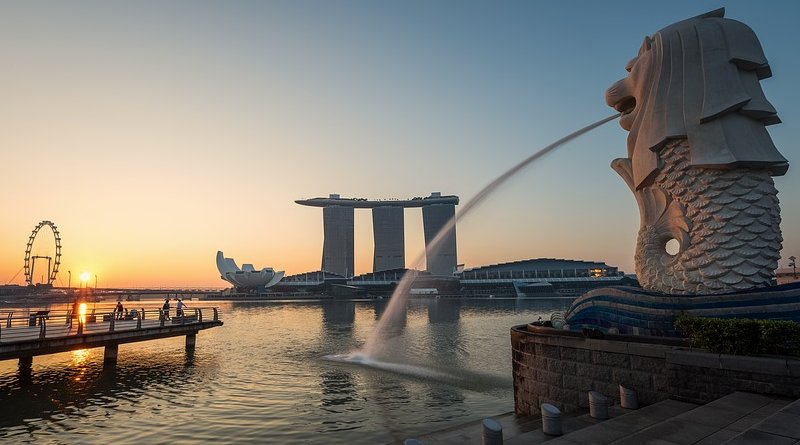Singapore’s Coasts Are Historically More Resilient Against Sea-Level Rise Than Previously Thought
During the Holocene epoch, which began around 11,700 years ago, coastlines globally retreated due to thousands of years of rising sea levels. However, a team of researchers at Nanyang Technological University, Singapore (NTU Singapore) found this was not true for Singapore’s coasts.
The study found that even at high rates of sea-level rise (five millimetres per year – one millimetre above current rates), the southern coastal area stayed resilient and extended seaward.
Coasts usually retreat as sea levels rise, low-lying coastal areas get flooded, submerging coastal land and eroding coastal features such as cliffs and shorelines, leading to landward retreat.
The study by scientists at NTU Singapore’s Earth Observatory of Singapore found that the key to the resilience of Singapore’s coasts was the steadily high amount of sediment deposited around them, which acted as a safeguard against sea-level rise.
Through an analysis of sediment collected from Singapore’s Marina South, the researchers discovered that the country’s sediment-rich coasts evolved from mangroves to estuaries and, finally a coastal area with a river delta between ten and seven thousand years ago during a period of high sea-level rise.
According to the researchers, current research suggests that when the sea-level rise rate is greater than the rate of sedimentation, the coast retreats and vice-versa. However, their study provides the first quantified threshold value of 1.7, showing that the ancient Singapore coast was stable and moved seaward even when sea-level rise was up to 1.7 times the sedimentation rate. Prior to this, studies used a hypothetical one-to-one ratio to describe the relationship between sedimentation and sea-level rise.
The study provides new insights into the interplay between rising sea levels and sedimentation, showing that a coast with high sediment supply, such as Singapore’s during the past thousands of years, could mitigate sea level rise.
Lead author Assistant Professor Stephen Chua, from the Earth Observatory of Singapore at NTU Singapore, said: “The findings from our study shed light on the remarkable value of sediment supply on the resilience of Singapore’s coastal systems during periods of rapid sea-level rise. This historical perspective is invaluable as it offers insights into the potential responses of Singapore’s coastal systems to future sea-level rise scenarios. This method can also be applied for informed decision-making, sustainable coastal management, and the development of strategies to mitigate the impacts for the countries in South, Southeast, and East Asia, as they are home to billions of people vulnerable to rising sea levels.”
Second author Professor Adam Switzer, Principal Investigator at NTU’s Earth Observatory of Singapore, said: “Establishing a threshold between sedimentation and sea level rise rates represents a positive step in our understanding of coastal resilience. Accurate data on sedimentation rates informs the design and construction of coastal infrastructure, including sea walls and flood defences. Understanding how sediments accumulate or erode can lead to more effective engineering solutions that consider natural processes.”
The findings are an example of research supporting the NTU 2025 strategic plan, which seeks to address humanity’s grand challenges on sustainability and accelerate the translation of research discoveries into innovations that mitigate human environmental impact.
The findings were published in the scientific journal Marine Geology in September.
Sedimentation in today’s context
Sedimentation occurs when rivers carry sediment, such as gravel, sand, and silt, towards coastal areas where they get deposited. This process acts as a natural guardian against rising sea levels as it replenishes eroded sediments and retains coastal areas’ natural shape and boundary.
These coastal sediments also support the growth of critical coastal habitats, such as mangroves and salt marshes, further enhancing coastal resilience, biodiversity, and carbon storage.
However, urbanisation in countries worldwide has led to reduced sedimentation rates along coastlines due to land reclamation, infrastructure development, altered river courses, and stormwater management.
While urbanisation brings economic benefits and development opportunities, it also challenges coastal ecosystems and requires careful planning to mitigate the negative impacts on sedimentation and coastal resilience.
The current sedimentation rate in Singapore is still unknown, although the NTU team estimates it to remain high due to the high rainfall in Singapore.
Asst Prof Chua added: “We expect sedimentation rates to be high in Singapore, as it is situated in an equatorial region with high weathering and sediment transport rates. Several rivers, including the Singapore, Kallang and Buloh Rivers, influence the island nation and transport sediments from catchment areas to coastal areas. Our future work aims to accurately ascertain sedimentation rate and distribution patterns to better inform policymakers in the ongoing effort to safeguard Singapore’s coastline.”
Prof Switzer added: “Despite rapid urbanisation globally, which might have affected sedimentation, Singapore is an outlier as it has implemented strategic coastal management and development plans that consider sedimentation rates. These plans often involve measures to ensure that sedimentation remains relatively high, as it contributes to the stability and resilience of coastal areas.”
The team adds that combining strategic management of sediment supply with preserving and restoring mangroves offers a holistic and nature-based approach to combat sea level rise. This strategy harnesses the power of natural processes and ecosystems to enhance coastal resilience, protect communities, and mitigate the impacts of climate change. It represents a sustainable and environmentally friendly approach to coastal management in the face of rising sea levels.
The NTU team will be engaging local governmental bodies such as Singapore’s Public Utilities Board and National Parks Board to further improve the resilience of Singapore’s coastlines.

